Recommendations and Reviews: Creating a student book club
Engaging students in reading can be challenging yet incredibly rewarding. Student book recommendations and book review sites for students offer a valuable avenue to foster a love of reading and create a community of engaged learners. Creating a student book club, facilitated through software like Reading Cloud, can be an excellent way to harness the power of peer recommendations and reviews.
In this blog, we look at how to create an engaging student book club and nurture more peer-to-peer recommendations through the blogs and reviews features on Reading Cloud.


How can recommendations and reviews be used to create a student book club?
Student book clubs thrive on the exchange of ideas and shared experiences with literature. Student book recommendations play a critical role in shaping the reading habits and preferences of their peers. When students suggest books to each other, it not only sparks interest in new genres and authors but also fosters a sense of camaraderie. These recommendations can be facilitated through book reviews for students like the feature integrated into Reading Cloud, where students can post and read peer reviews.
How can book clubs encourage learning and involve students and parents more in reading?
Book clubs are a fantastic medium for encouraging learning beyond the traditional classroom setting. They provide a relaxed environment where students can explore themes, character development, and narratives in a more interactive way. Discussions within the book club can be structured around critical thinking questions, encouraging students to delve deeper into the material. This not only enhances their understanding but also improves their analytical and verbal communication skills.
Bridging the gap between students and parents
Book clubs can also serve as a bridge between students and parents. Involving parents in the book club process, whether through family reading nights or parent-student book discussions, can strengthen the school community. Parents can share their perspectives on books and literary themes, providing a more comprehensive understanding of the material. This engagement can also motivate students to read more beyond the classroom and at home, knowing that their parents are involved and engaged in the process.


Incorporating book clubs in the classroom
Book clubs can be seamlessly incorporated into the classroom setting. Teachers can allocate specific times for book club meetings, either as part of the regular curriculum or as an extracurricular activity. Using software like Reading Cloud, students can access a variety of books, read reviews, and see what their peers are reading. This digital integration makes it easier for students to participate, even if they have busy schedules or other school commitments.
Use real world events to build thematic reading lists
To further engage students, teachers can organise thematic book club meetings. For example, during Black History Month in October, the club could focus on books by black British authors or stories that highlight significant historical events in black history. This thematic approach not only enriches the reading experience but also broadens students’ cultural and historical understanding.

The value of peer-to-peer book recommendations
Peer-to-peer book recommendations hold significant value in a student book club. When students recommend books, they often do so with enthusiasm and personal insights, which can be more relatable and convincing than recommendations from adults. This peer influence can encourage reluctant readers to pick up a book, knowing that someone their age enjoyed it.
The use of the book review tool on Reading Cloud allows students to rate and review books, creating a resource that peers can refer to when choosing their next read. This collective knowledge base not only helps in making informed reading choices but also builds a supportive community where students feel encouraged to share their thoughts and opinions.
Ideas for book review projects
Video reviews
Book review projects can be an excellent way to engage students in a more structured analysis of their reading. One idea is to have students create video book reviews, where they discuss the plot, characters, and their personal reactions to the book. These videos can be shared on the school’s library website or through the Reading Cloud platform, allowing other students to be inspired by them and further creating a sense of a reading community.
Blog post reviews
Another project could involve students writing blog posts or articles reviewing books. These written reviews can then be compiled into a digital or physical newsletter distributed throughout the school. This not only encourages writing skills but also gives students a platform to voice their opinions and recommendations.
Presentations
Teachers can also organise a “Book Review Day” where students present their reviews to the class or in assembly. This public speaking opportunity allows students to practice their presentation skills while sharing their reading experiences. Additionally, incorporating a voting system where peers vote for the best review can add an element of fun and competition, further motivating students to participate.
Benefits of book clubs and project reviews
Book clubs and review projects offer numerous benefits for students. They provide a platform for developing critical thinking and analytical skills, as students are encouraged to think deeply about the books they read. These activities also enhance communication skills, both written and verbal, as students discuss and write about their thoughts.

Build community
Book clubs and review projects promote a sense of community. They bring students together over a shared interest in reading, fostering friendships and a supportive environment. This sense of belonging can be particularly beneficial for students who may feel isolated or struggle to make friends.
Make reviews part of the reading experience
Integrating student book recommendations, book reviews, and book clubs into the school environment enriches the educational experience. By creating a space for students to discuss literature, express their thoughts, and recommend books to their peers, schools can foster a lifelong love for reading. Reading Cloud offers a comprehensive platform to support these initiatives, making it an invaluable tool for educators looking to promote literacy and engagement among their students.
In summary
Reviews and recommendations are a key aspect to reading. They serve as powerful tools for student engagement and to support deeper understanding of a text. By encouraging active engagement with texts, we’re not just teaching reading; we’re nurturing critical thinkers who can explore complex ideas and expand their understanding of the world – a skill set which will prove invaluable to students in their academic and future professional careers.
Reading Cloud goes beyond traditional library management software by providing the tools that encourage students to share reviews, recommend titles, and connect with fellow readers.
Ready to transform your school library?
Don’t miss out on the opportunity to elevate your students’ library experience. If you’re not yet part of the Reading Cloud family, now is the perfect time to find out more about what we can offer your school. Book a no obligation demo with one of our expert Sales team today and discover how Reading Cloud can transform your school library.

